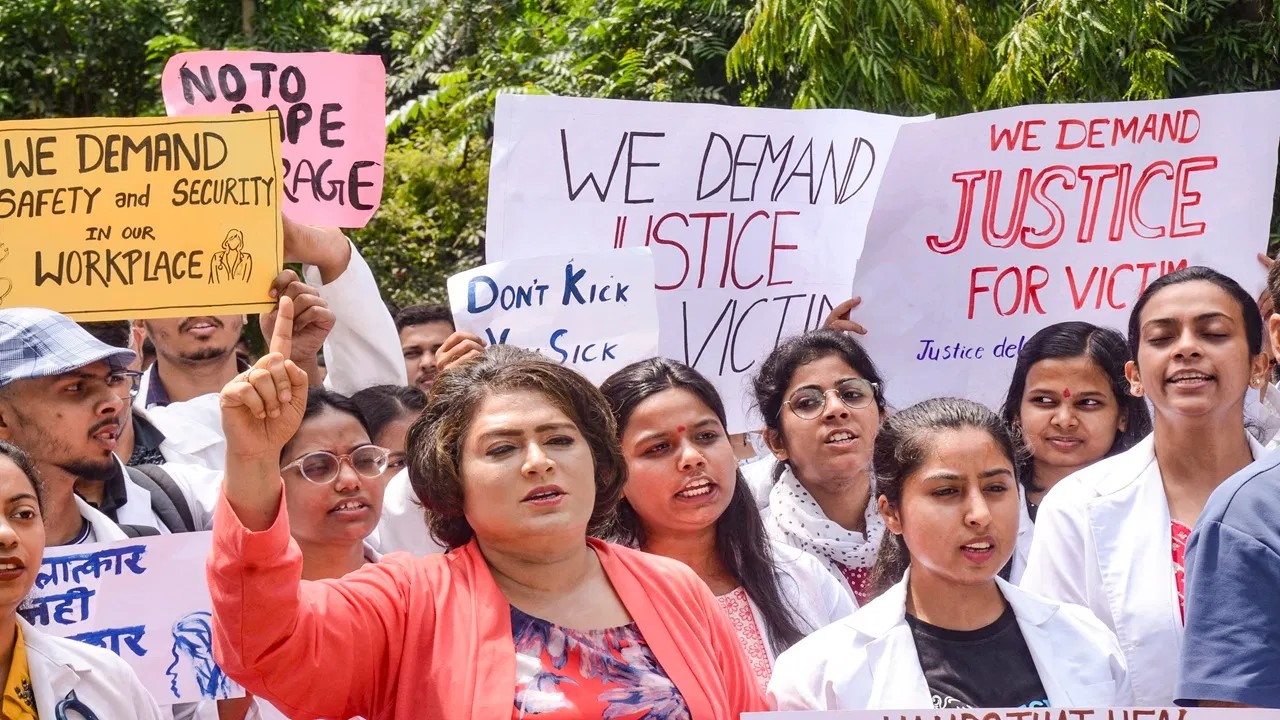As more and more women join the work force, the nation has a vital stake in ensuring safe and dignified conditions of work

While the hon’ble Supreme Court of India was quick to take Suo Motu Cognisance “In re: alleged rape and murder incident of a trainee doctor in R.G. Kar Medical College and Hospital, Kolkata and related issues” vide Suo Motu Writ (Criminal) No. 2 of 2024, and even the constitution of a National Task Force (NTF) which has appointed nine Medical Professionals who shall constitute a diverse body of persons with experience in healthcare institutions to formulate effective recommendations to remedy the issues of concern pertaining to safety, working conditions and well-being of medical professionals, the decision of the Apex Court to accord protection against sexual violence towards only a specific set of female medical professionals can be perceived as limiting the protection only to a certain field of work i.e. the medical profession, while the rest of the working women would in other fields of work be subject to the general laws in regards to sexual violence and exploitation.
The following observation from paragraph 13 of the Order dated: 20.08.2024 demonstrates the limits of application of the protection to only a specified class of the feminine gender.
“It is clarified that the phrase medical professionals used in this judgment encompasses every medical professional including doctors, medical students who are undergoing their compulsory rotating medical internship (CRMI) as a part of the MBBS course, resident doctors and senior resident doctors and nurses (including those who are nursing interns)”
The Supreme Court of India by observing that “their safety and well-being as health providers is a matter of national interest”, the necessity of protecting all women from sexual exploitation and violence should not be dilated from the focus of the effort in holding the State accountable for the safety of all its female citizens.
To afford further perspective, a recent treaty by the International Labour Organisation in its Preamble spells out the importance of:
“Recognizing the right of everyone to a world of work free from violence and harassment, including gender-based violence and harassment, and
Recognizing that violence and harassment in the world of work can constitute a human rights violation or abuse, and that violence and harassment is a threat to equal opportunities, is unacceptable and incompatible with decent work, and
Recognizing the importance of a work culture based on mutual respect and dignity of the human being to prevent violence and harassment, and
Recalling that Members have an important responsibility to promote a general environment of zero tolerance to violence and harassment in order to facilitate the prevention of such behaviours and practices…” (“ILO Convention 190,” 2020).
Historically, the proactive judicial activism of the honourable Supreme Court of India can be easily detected from the Guidelines issued in Vishaka & Ors. Vs. State Of Rajasthan & Ors., vide Judgment dated: 13/08/1997, wherein it was observed that:
“In view of the above, and the absence of enacted law to provide for the effective enforcement of the basic human right of gender equality and guarantee against sexual harassment and abuse, more particularly against sexual harassment at work places, we lay down the guidelines and norms specified hereinafter for due observance at all work places or other institutions, until a legislation is enacted for the purpose.”
Along the same ideals of protection of women from sexual exploitation and for the prevention of all forms of sexual violence against the entire population of women in the country, the application of the laws must not and cannot be discriminatory to the extent of empowering only a certain specific cadre of professionals.
The learned Chief Justice of India, has himself observed in his Order dated: 20.08.2024, in SMW (Crl) No 2 of 2024:
“As more and more women join the work force in cutting edge areas of knowledge and science, the nation has a vital stake in ensuring safe and dignified conditions of work…The nation cannot await a rape or murder for real changes on the ground.”
The important consideration here is that where there are a multitude of professions and occupations where women are engaged in working as empowered beings, and where the conditions of work are not as ideal as they should be, the effort on the part of the Supreme Court of India in the capacity of being the custodian of fundamental rights of all citizens, should be an all encompassing effort which seeks to confer perennial protection to all women in similar situations inclusive of the women in the medical profession. Because the ratio should flow from the intention of the legislature in enshrining Article 15 which envisages the ‘Prohibition of discrimination on grounds of religion, race, caste, sex or place of birth’, more particularly, Article 15(3) which reads as: (3) Nothing in this article shall prevent the State from making any special provision for women and children.
The justification for flagging a comprehensive effort aimed at protecting the right to coexist with dignity of all women at the workplace can be detected in a recent research article by Miele et al. (2023) entitled: International guidelines for the prevention of sexual violence: A systematic review and perspective of WHO, UN Women, UNESCO, and UNICEF's publications, which was published in the Journal of Child Abuse & Neglect at Volume 146 on December 2023.
The results of the research attract attention:
“All international guidelines were limited to primary or tertiary prevention, and they were not specifically dedicated to sexual violence. In addition, each organization had developed idiosyncratic prevention strategies. Common primary prevention determinants of health were still found across organizations, including education, socio-economic inequalities, and life skills training. Tertiary prevention was poorly developed and polarized between victims and perpetrators.” (Miele et al., 2023, p. 1).